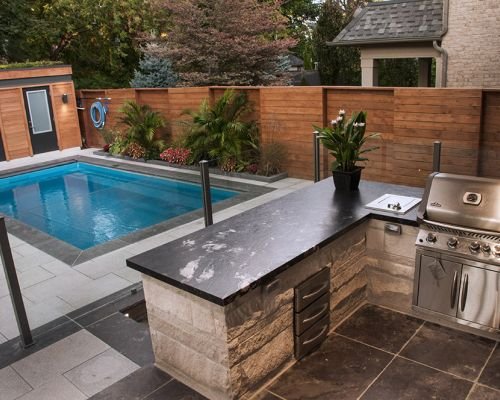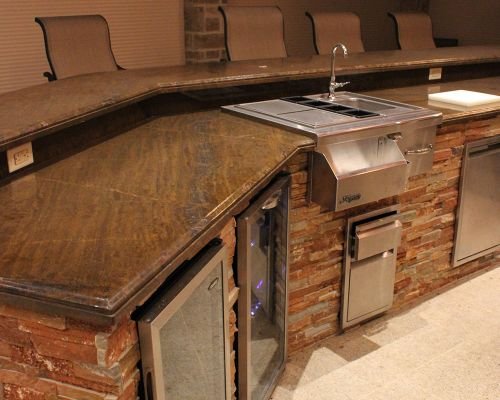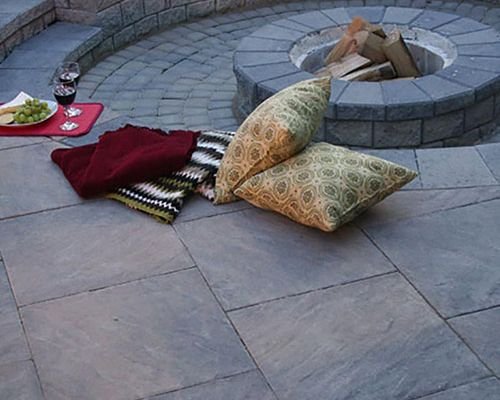Transforming Toronto yards into inviting outdoor retreats is about more than aesthetics—it’s a delicate balance of beauty, sustainability, and personal lifestyle. How can homeowners create spaces that serve practical needs while reflecting their individuality? This guide explores the essential principles of landscape design, emphasizing harmony, functionality, and visual flow, all tailored to Toronto’s unique climate and regulations. Sustainability plays a pivotal role, incorporating native plants, eco-friendly materials, and water-efficient systems to reduce environmental impact and ensure resilience across seasons. The seamless execution from design to installation relies on clear communication, expert coordination, and flexibility to navigate unforeseen challenges, making the transformation process both smooth and rewarding. Looking ahead, innovative trends like smart technology, biophilic elements, and climate adaptation strategies promise to redefine outdoor living, fostering spaces that are not only beautiful today but resilient for the future. Are these strategies enough to achieve the perfect outdoor sanctuary in Toronto?
Transform Your Toronto Outdoor Space with Expert Landscape Design
Looking to elevate your outdoor living in Toronto? Toronto Landscape & Design (TLD) offers comprehensive services including natural stone installations, water gardens, irrigation systems, and retaining walls that turn your backyard into a stunning retreat. Our award-winning designers take everything into consideration, ensuring every detail aligns with your vision and the natural environment. Whether you’re dreaming of a lush water feature or a durable retaining wall, we tailor our solutions to suit your unique space. Discover the difference a professional backyard makeover can make. Contact us today at 1.416.644.0499 or email mike@torontolandscapedesign.com to start transforming your outdoor space into a beautiful, functional oasis.

Transforming Toronto Yards into Personal Outdoor Retreats
Transforming a Toronto yard into a welcoming outdoor retreat isn’t just about adding some plants or laying a few stones; it’s about creating a space that truly reflects your lifestyle and personal taste. In the city’s busy environment, a well-designed yard offers a rare chance to escape, unwind, and reconnect with nature—all without leaving home. Whether it’s a cozy corner with a fire pit, a lush garden for relaxing weekends, or a sleek patio for outdoor dinners, the goal is to craft an area that feels both inviting and functional.
Achieving this balance starts with thoughtful planning. It’s about blending beauty with practicality—making sure each feature serves a purpose while enhancing the overall look. A successful transformation considers how the space will be used daily, aiming to support activities like relaxing after work, hosting friends, or gardening. When designed with intention, the yard seamlessly becomes an extension of the home, reflecting the homeowner’s personality and fulfilling their needs.
Toronto’s unique climate and city regulations add layers of complexity to yard makeovers. Limited space, seasonal weather extremes, and local ordinances influence every decision—from plant selection to hardscape materials. This is where creative solutions come into play, ensuring the yard remains resilient and beautiful year-round. It’s about making smart choices that maximize every square foot and selecting eco-friendly, durable materials that stand up to Toronto’s seasons.
Sustainability is also a key consideration. More homeowners are seeking outdoor spaces that are not only attractive but environmentally responsible. Incorporating native plants, eco-friendly hardscaping, and water-efficient systems helps reduce maintenance and environmental impact. These choices foster healthier ecosystems and create landscapes that blend naturally with Toronto’s surroundings, supporting both the environment and long-term beauty.
Throughout the process, collaboration matters. Listening to clients’ preferences, routines, and aesthetic tastes helps shape a yard that feels personal and well-suited to their lifestyle. Using visual tools like renderings early on allows homeowners to see their ideas come to life, reducing surprises and aligning expectations. This teamwork turns the transformation into an enjoyable journey, resulting in a space that feels truly theirs.
In Toronto, investing in outdoor spaces isn’t just about boosting curb appeal or property value; it’s about enhancing daily life. A thoughtfully designed yard can become a peaceful sanctuary amid the city’s hustle, offering a place to relax, entertain, or simply enjoy the outdoors. With careful planning, sustainable practices, and expert execution, transforming yards into stunning retreats is entirely achievable—creating a harmonious, beautiful environment that’s as functional as it is inviting.
Core Principles That Define Successful Landscape Design
Successful yard transformations rest on a few core principles that serve as the foundation for planning and execution. Balance is key; whether achieved through symmetry or intentional asymmetry, a well-balanced layout creates harmony and encourages exploration. When elements are thoughtfully arranged, the space feels cohesive rather than cluttered, making it more inviting and functional. It’s about creating a sense of flow that guides visitors naturally through different zones, whether it’s a cozy seating nook or a vibrant garden bed.
Functionality must be at the forefront of design. A yard that looks appealing but doesn’t support the homeowner’s routines won’t fulfill its purpose. Every feature, from pathways to planting areas, should support activities like relaxing, entertaining, or gardening. Prioritizing practical needs alongside aesthetic appeal ensures the space enhances daily life without sacrificing style. When these elements work together seamlessly, the yard becomes an extension of the home that’s both beautiful and livable.
Visual flow is another essential principle. Guide the eye with carefully placed pathways, focal points, and plant groupings that encourage movement and discovery. For instance, a winding stone path can lead to a cozy fire pit or water feature, making the journey through the yard more engaging. Focal points like sculptures or lush garden beds anchor the design, giving the space character and reflecting the homeowner’s personality. When every element is intentionally positioned, the yard feels unified and inviting.
Sustainability is woven into every aspect of good landscape design. Native plants adapted to Toronto’s climate reduce water use and minimize the need for fertilizers and pesticides, supporting local ecosystems. Choosing eco-friendly hardscaping materials such as permeable pavers or recycled stones helps manage stormwater effectively, reducing runoff and environmental impact. Incorporating water-efficient irrigation systems further conserves resources, ensuring the landscape remains resilient and low-maintenance over time.
Every element, from layout to materials, should work together to create a cohesive, visually appealing environment. Thoughtful zoning—designating areas for dining, lounging, or gardening—facilitates smooth transitions and functional flow. Durable materials for decks and pathways maintain their charm for years, while strategic lighting extends usability into the evening. When these principles align, the yard becomes a seamless extension of the home, supporting both beauty and practicality.
Involving homeowners throughout the process enhances the outcome. Listening carefully to their preferences, routines, and aesthetic tastes helps craft a space that feels personal. Visual tools like mood boards or 3D renderings allow clients to see their future yard, reducing surprises and fostering confidence. Flexibility during construction lets adjustments be made based on site conditions or new ideas, making the process collaborative and enjoyable. When design and execution are aligned, the result is a yard that truly reflects the homeowner’s vision and lifestyle.

Embracing Sustainability for Eco-Friendly Landscapes
Incorporating sustainability into landscape design means making conscious choices that reduce environmental impact while creating visually stunning and functional outdoor spaces. Native plants are a cornerstone of this approach; they are naturally adapted to Toronto’s climate, requiring less water, fertilizers, and pesticides. These resilient species support local ecosystems and promote biodiversity, all while demanding less ongoing maintenance. Using native plants not only makes the yard more sustainable but also ensures it remains vibrant through seasonal changes.
Eco-friendly materials play a vital role in creating resilient landscapes. Recycled concrete, permeable pavers, and natural stones help manage stormwater effectively by allowing water to seep into the ground rather than overwhelming city drainage systems. These materials often come from local sources or are recycled, which minimizes transportation emissions and reduces the carbon footprint of hardscaping. Their durability and natural aesthetic blend seamlessly into the landscape, supporting both function and beauty.
Water conservation is essential in sustainable landscape design. Installing drip irrigation systems, rain sensors, and timers ensures plants receive adequate moisture without waste. Rainwater harvesting in barrels provides an additional resource, reducing reliance on municipal water supplies and supporting self-sufficiency. These systems work together to keep yards lush during dry spells while conserving precious resources, especially during Toronto’s increasingly unpredictable weather patterns.
Beyond plant and material choices, sustainable maintenance practices are crucial. Organic fertilizers and composting yard waste naturally enrich the soil, supporting healthy plant growth without chemicals. Regular inspections for pests and disease allow early intervention, often with organic remedies that minimize environmental harm. This approach keeps landscapes healthy, vibrant, and less dependent on synthetic inputs over time.
Designing with sustainability in mind doesn’t mean sacrificing style. Thoughtful integration of native plants, eco-friendly hardscaping, and water-efficient systems results in landscapes that are both beautiful and adaptable. These resilient environments require less ongoing effort, making them easier to maintain while supporting local biodiversity and reducing pollution.
Long-term care emphasizes soil health and resource efficiency. Proper pruning, mulching, and soil management foster robust plant growth naturally. Using organic fertilizers and compost boosts soil vitality, ensuring plants remain healthy and productive. Employing early morning deep watering and rain sensors further conserves water, creating a landscape that thrives sustainably year after year.
Maintaining these eco-conscious yards involves straightforward, consistent practices. Regularly mulching to retain moisture, composting organic waste, and monitoring plant health support a balanced ecosystem. These simple steps help ensure the landscape remains lush, resilient, and environmentally friendly, requiring less intervention and fewer resources over time.
By embracing these sustainable practices, Toronto homeowners create outdoor spaces that are not only beautiful but also environmentally responsible. These landscapes support local ecosystems, conserve resources, and adapt to the city’s climate challenges. In the end, a well-designed, eco-friendly yard offers a peaceful retreat that aligns with both personal values and broader environmental goals, ensuring beauty and sustainability go hand in hand for years to come.
Seamless Execution from Planning to Perfected Outdoor Spaces
Ensuring a smooth transition from design to installation is crucial for turning a well-crafted plan into a stunning outdoor space. Clear communication from the start helps keep everyone on the same page—designers, contractors, and homeowners alike. When expectations are transparent and responsibilities well-defined, misunderstandings and delays become less likely. Regular updates and site visits during construction keep the project aligned with the original vision, allowing for quick adjustments if unforeseen issues arise.
Coordination during installation is about paying close attention to detail at every step. Each element—whether planting, hardscaping, or lighting—must be executed with precision. Having a dedicated project manager or lead supervisor oversee the work ensures consistency and quality control. This oversight helps catch small mistakes early, preventing them from escalating into costly problems later. A well-managed process not only saves time but also preserves the integrity of the design.
Communication shouldn’t stop once work begins. Keeping homeowners informed about progress and any potential changes fosters trust and collaboration. Their feedback can be invaluable, especially if they notice something that doesn’t quite match their expectations. Being receptive and flexible during installation builds a positive experience, making clients feel involved and valued throughout the process.
Unexpected challenges are inevitable—weather delays, supply chain issues, or site-specific complications. Addressing these quickly and proactively turns potential setbacks into opportunities for creative solutions. Whether it’s adjusting plant choices, modifying hardscape details, or rescheduling work, flexibility keeps the project moving forward without sacrificing quality. Open dialogue ensures that problems are managed efficiently and with minimal disruption.
A seamless execution builds confidence in the entire process. When clients see their outdoor space taking shape under professional guidance, trust in the team’s expertise grows. This confidence often leads to higher satisfaction with the final result and a stronger belief that their vision has been realized. Treating each step as a partnership makes the journey enjoyable and rewarding for everyone involved.
After installation, a thorough follow-up is essential. Inspecting the completed work, addressing any lingering concerns, and providing guidance on ongoing maintenance reinforce the team’s commitment to quality. When homeowners feel supported beyond the project’s end, they’re more likely to enjoy their new yard fully and with confidence. This ongoing support helps preserve the beauty and functionality of the space for years to come.
Ultimately, a smooth, well-coordinated process transforms a complex project into a satisfying experience. It’s about more than just completing construction; it’s about creating a space that meets expectations and feels personalized. When every phase is handled professionally and thoughtfully, the result is an outdoor retreat that truly reflects the homeowner’s vision—beautiful, functional, and built to last.

Innovations Shaping Toronto’s Future Landscape Designs
As Toronto’s outdoor spaces continue to evolve, innovative trends are shaping the future of landscape design in the city. Smart technology is becoming increasingly integrated, with automated irrigation systems, solar-powered lighting, and outdoor Wi-Fi turning yards into connected retreats. These advancements make maintenance more efficient and resource-conscious, helping homeowners manage water and energy use effortlessly. Not only do these tools boost convenience, but they also support sustainable practices, aligning with the growing demand for eco-friendly yard transformations.
Eco-conscious materials are gaining popularity as well, reflecting an overarching shift toward sustainability. Recycled composite decks, permeable pavers, and natural stone pathways are now common choices, supporting stormwater management and reducing environmental impact. These durable, stylish materials blend seamlessly into natural landscapes, offering long-lasting beauty while minimizing ecological footprints. As more homeowners prioritize environmentally responsible design, these innovative hardscaping solutions are becoming standard in Toronto’s outdoor projects.
Biophilic design principles are increasingly influencing outdoor spaces, emphasizing a stronger connection to nature. Incorporating native plants, green roofs, and living walls not only enhances visual appeal but also promotes biodiversity and ecosystem resilience. These elements help landscapes better withstand climate fluctuations and environmental stresses, ensuring they remain vibrant and functional over time. As awareness of climate change grows, designing with ecological balance in mind is no longer optional but essential for creating resilient, sustainable retreats.
Technology is also revolutionizing how projects are planned and visualized. Virtual reality and 3D modeling allow clients to experience their future yard before construction begins, making informed decisions easier and reducing costly revisions. This immersive approach fosters confidence and excitement, ensuring every detail aligns with the homeowner’s vision. It also streamlines communication and collaboration, leading to more precise execution and greater satisfaction with the final result.
Looking ahead, climate adaptation strategies are becoming central to landscape planning. Drought-tolerant plants, water-efficient irrigation, and climate-responsive hardscapes are designed to endure Toronto’s seasonal extremes. These innovations guarantee that outdoor retreats stay lush and inviting despite weather fluctuations, supporting long-term beauty with less effort. As environmental challenges persist, integrating resilience into landscape design ensures these outdoor spaces remain sustainable, functional, and inspiring for years to come.